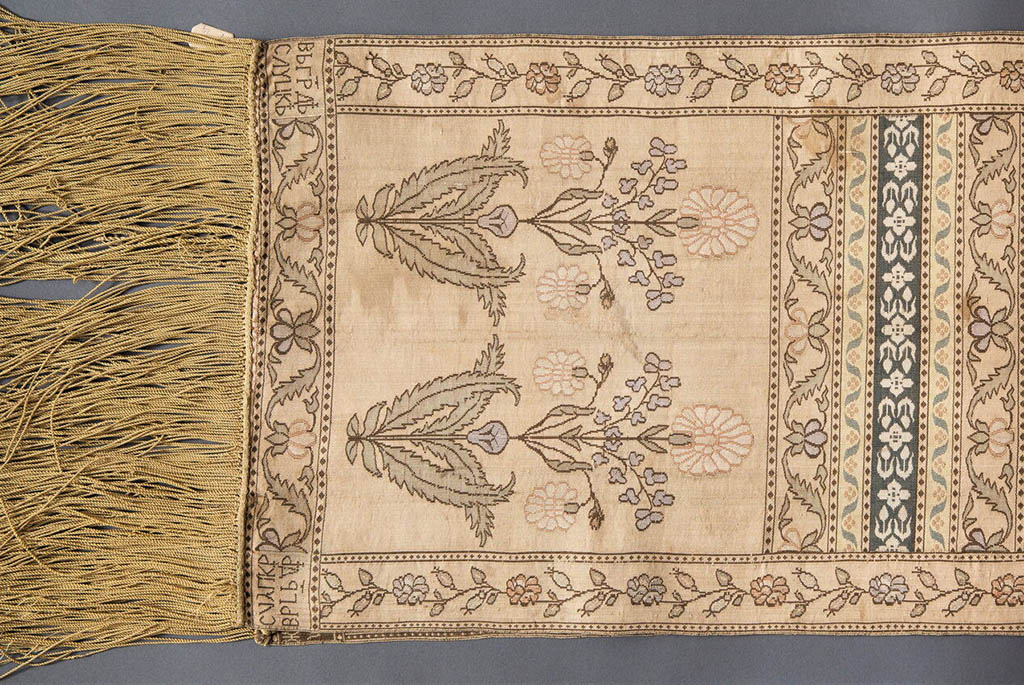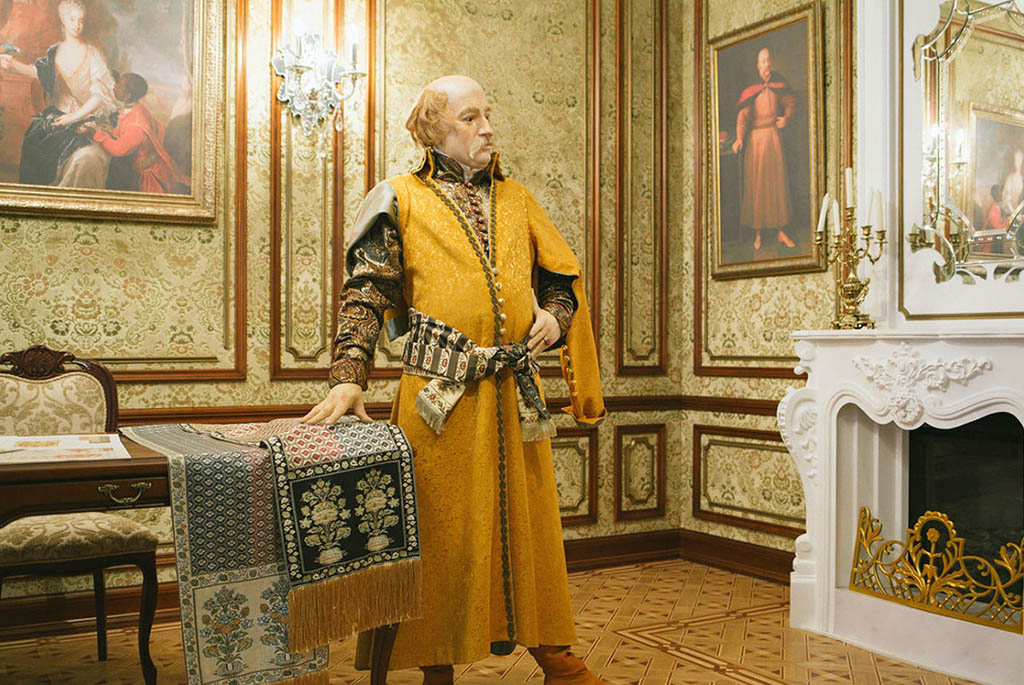Predecessors of the Slutsk belts were Persian belts, which were imported to the Polish-Lithuanian Commonwealth from the Ottoman Empire. Belarusian craftsmen adopted the oriental weaving technique and soon manufactories were opened in the country, engaged in the manufacture of belt products. One of the largest factories was located in Slutsk. Its owner was the Lithuanian hetman, Michał Radziwiłł. To train local weavers, an Armenian-origin Turkish craftsman, Ovanes Madzharants, was invited to the Slutsk factory. Madzharants slightly modified the traditional Persian belt, making it narrower, shorter, and reducing the number of ornamental motifs.
Gradually, the eastern patterns on the belts were replaced with decorations characteristic of Slavic culture. Slutsk craftsmen began using floral designs based on local herbs, flowers, and trees. Daisies, cornflowers, oak, and maple leaves started to adorn the belts. The Slutsk belts transformed from a men's wardrobe item into a genuine example of decorative arts.
Only men engaged in the weaving of Slutsk belts. It was believed that silk threads would fade from the touch of women's hands. Moreover, working on a weaving loom required good physical strength, so women were involved in the production process only as assistants.
Over time, factories producing Slutsk belt analogues opened in Nesvizh, Slonim, Shklov, Krakow, Gdansk, Warsaw, the French city of Lyon, and other places. The Slutsk manufacture began to mark its belts to emphasize that they were made in Slutsk.
What were the Slutsk belts?
This element of noble men's attire was a piece of fabric up to 4 meters in length and 30-50 cm in width, woven from silk threads, with the addition of gold or silver. A single belt could contain up to two hundred grams of precious metals. The edges of the product were framed with a patterned border, and the ends were adorned with intricate floral designs, and sometimes with fringe. The belts could be single-sided, double-sided, three-sided, or four-sided, with all sides being the "front" side. The more sides a belt had, the more valuable it was.
The belts were worn over the kontush - an outer garment. They served as decorative elements but also had a practical purpose – they supported the kontush and secured cold weapons.
Wearing Slutsk belts followed certain rules:
- On festive occasions, it was customary to tie the belt with its gold or red side facing out;
- For mourning events, the darker side was displayed;
- For everyday wear, the gray or green side was shown outward.
Only affluent men could afford such a purchase, so the Slutsk belts were a symbol of high status, wealth, and affiliation with the upper class.
The Decline and Revival of Weaving Traditions
After the third partition of the Polish-Lithuanian Commonwealth, French fashion seeped into Eastern Europe and the Slutsk belts began to lose their relevance. Following the 1830-31 uprising, Russian authorities even banned noble costumes. Nobles hid their belts in chests, donated them to churches, or melted them down to extract the silver or gold.
In 1848, the Slutsk manufactory was shut down, and the production of these belts ceased. The weaving technology was considered lost, and the belts themselves became items of interest for museums and private collectors.
In 2012, the Belarusian government decided to revive the belt-making technology. At the Slutsk factory, known for its textile production, they initiated the production of replicas of the famous belts. To do this, they ordered an exclusive loom from Germany, which has no analogues in the world. Modern manufacturing and computer technologies have eased the workload for the weavers, but creating the belts remains a meticulous task. Crafting a single belt requires about 60 hours of continuous work.
Belts are made to individual orders, with the cost of a piece ranging from 1 to 5 thousand dollars. The final price depends on the size of the belt and the amount of precious metals used in its fabrication.
The "Slutsk Belts" enterprise houses a museum that contains original 18th-century items, fragments, and replicas. In the museum, one can learn about the history of the Slutsk belts and watch the loom in operation.
A separate hall in the museum is dedicated to recreating a section of the Nesvizh Castle interior – the residence of the Radziwiłł family. In its time, the Nesvizh Castle housed the largest collection of Slutsk belts. Before World War II, this collection was handed over to the Belarusian Art Gallery, but during the war, the belts disappeared without a trace. It's estimated that currently, there are only about 1,000 original Slutsk belts in the world. Only 11 of them are housed in Belarusian museums. The rest are stored in museums of neighboring countries – Russia, Poland, Ukraine, Lithuania, and also with private collectors.





